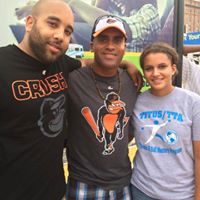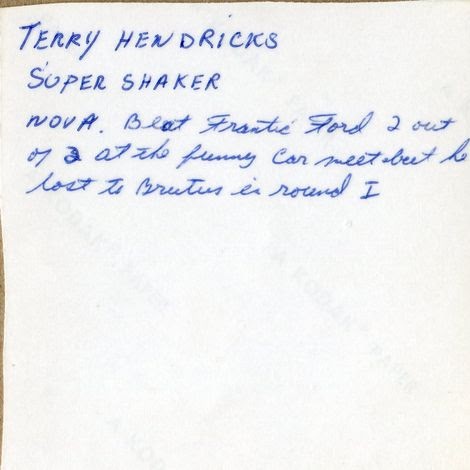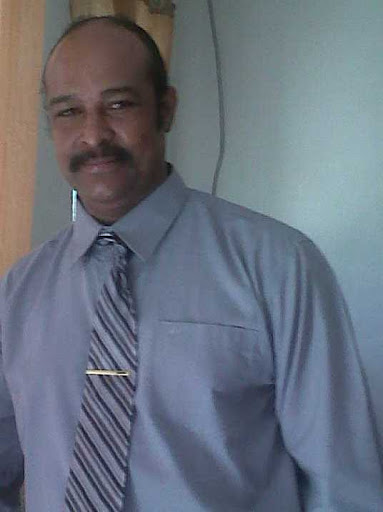Cecil Ray Robinson
Deceased
from Leitchfield, KY
- Also known as:
-
- Cecil R Robinson
- Cecil Louisville
- Phone and address:
- 287 Rock Creek Dr, Leitchfield, KY 42754
Cecil Robinson Phones & Addresses
- 287 Rock Creek Dr, Leitchfield, KY 42754
- Clarkson, KY
- 321 Joy Ave, Mount Washington, KY 40047 • 5029040246
- Louisville, KY
- Taylorsville, KY
- Las Vegas, NV
Isbn (Books And Publications)

Mexico and the Hispanic Southwest in American Literature: Revised from With the Ears of Strangers
view sourceAuthor
Cecil Robinson
ISBN #
0816505934

The View from Chapultepec: Mexican Writers on the Mexican-American War
view sourceAuthor
Cecil Robinson
ISBN #
0816510830

No Short Journeys: The Interplay of Cultures in the History and Literature of the Borderlands
view sourceAuthor
Cecil Robinson
ISBN #
0816512701
Us Patents
-
Apparatus And Method For Performing An Anastomosis
view source -
US Patent:6565581, May 20, 2003
-
Filed:Aug 17, 2000
-
Appl. No.:09/641284
-
Inventors:Paul A. Spence - Louisville KY
Warren P. Williamson IV - Loveland OH
George Christakis - Toronto, CA
Mark Ortiz - Milford OH
Craig B. Berky - Milford OH
Douglas P. Allen - Lyons CO
Matthew J. Huddleston - Blacklick OH
Delbert Ted Leimbach - Goose Creek SC
Cecil R. Robinson - Hilliard OH
E. Dale VanHoose - Columbus OH
Thomas J. Ward - Grandview Heights OH
Marty J. Warnecke - Grandview Heights OH -
Assignee:Origin Medsystems, Inc. - Menlo Park CA
-
International Classification:A61B 1708
-
US Classification:606153
-
Abstract:An anastomosis is performed using a flexible mounting structure mounted on the outside of at least one vessel. Fasteners extend through the vessel and are bent towards the incision to attach the flexible mounting structure to the vessel in a manner that controls the edge of the vessel adjacent to the incision. The mounting structures are oriented on each vessel so fasteners on one mounting structure interdigitate with fasteners on the other mounting structure at the location of contact between the vessels when the two vessels are brought together. This creates two complementary sinusoidal-shaped vessel edges with peaks of one edge being accommodated in the valleys of the other edge. The peak-to-valley orientation forms a sinusoidal-shaped joint which is leak free. The fasteners are spaced so proper pressure is applied to the tissue to promote healing without leaking. Furthermore, the fasteners are sized and shaped to properly engage the tissue and bend in a desired manner.
-
Apparatus And Method For Performing An Anastomosis
view source -
US Patent:6884251, Apr 26, 2005
-
Filed:Mar 6, 2003
-
Appl. No.:10/384250
-
Inventors:Paul A. Spence - Louisville KY, US
George Christakis - Toronto, CA
Mark Ortiz - Milford OH, US
Craig B. Berky - Milford OH, US
Douglas P. Allen - Lyons CO, US
Matthew J. Huddleston - Blacklick OH, US
Delbert Ted Leimbach - Goose Creek SC, US
Cecil R. Robinson - Hilliard OH, US
E. Dale VanHoose - Columbus OH, US
Thomas J. Ward - Grandview Heights OH, US
Marty J. Warnecke - Grandview Heights OH, US -
Assignee:Origin Medsystems, Inc. - Santa Clara CA
-
International Classification:A61B017/08
-
US Classification:606153, 606213, 128898
-
Abstract:An anastomosis is performed using a flexible mounting structure mounted on the outside of at least one vessel. Fasteners extend through the vessel and are bent towards the incision to attach the flexible mounting structure to the vessel in a manner that controls the edge of the vessel adjacent to the incision. The mounting structures are oriented on each vessel so fasteners on one mounting structure interdigitate with fasteners on the other mounting structure at the location of contact between the vessels when the two vessels are brought together. This creates two complementary sinusoidal-shaped vessel edges with peaks of one edge being accommodated in the valleys of the other edge. The peak-to-valley orientation forms a sinusoidal-shaped joint which is leak free. The fasteners are spaced so proper pressure is applied to the tissue to promote healing without leaking. Furthermore, the fasteners are sized and shaped to properly engage the tissue and bend in a desired manner.
-
Extremely Long Wire Fasteners For Use In Minimally Invasive Surgery And Means And Methods For Handling Those Fasteners
view source -
US Patent:7722642, May 25, 2010
-
Filed:Feb 25, 2004
-
Appl. No.:10/786657
-
Inventors:Paul A. Spence - Louisville KY, US
George A. Keller - Grandview Heights OH, US
Cecil R. Robinson - Hilliard OH, US
Thomas J. Ward - Columbus OH, US -
Assignee:Medtronic, Inc. - Minneapolis MN
-
International Classification:A61B 17/08
A61B 17/10 -
US Classification:606219, 606142
-
Abstract:Wire fasteners having legs with lengths that can be one hundred times the width of the fastener are used to secure items, such as prosthesis valves to a patient during minimally invasive surgery. The fasteners are manipulated into position and then are immobilized by means of the legs thereof for tensioning, cutting and forming in situ. The fasteners are manipulated, tensioned and formed from the leg end of the fasteners. Tools for initially placing the fasteners and for immobilizing, tensioning, cutting and bending the fastener legs are disclosed. Once the fasteners are initially placed, the prosthesis is placed on the long legs of the placed fasteners and is guided into position on the legs. Once the prosthesis is in position, the legs of the fasteners are immobilized, tensioned, cut and bent into staple-like shapes to secure the prosthesis to the patient. A method for carrying out the procedure using the long fastener is also disclosed.
Name / Title
Company / Classification
Phones & Addresses
Incorporator
Fayetteville Water Authority
Public Corporation
Public Corporation
Medicine Doctors

Cecil M. Robinson
view sourceSpecialties:
Gynecology
Work:
Johns Hopkins Obstetrics & Gynecology At Greensprings
10755 Fls Rd STE 420, Lutherville Timonium, MD 21093
4105832749 (phone), 4105832756 (fax)
10755 Fls Rd STE 420, Lutherville Timonium, MD 21093
4105832749 (phone), 4105832756 (fax)
Languages:
Chinese
English
Spanish
English
Spanish
Description:
Mr. Robinson works in Lutherville-Timonium, MD and specializes in Gynecology. Mr. Robinson is affiliated with The Johns Hopkins Hospital.
Classmates

Cecil Robinson
view sourceSchools:
Brooks County High School Quitman GA 1979-1983

Cecil Robinson (Bogart)
view sourceSchools:
Powell Middle School Powell WY 1920-1924
Community:
George Ehlers, Kendra Clark, Gwen Harris, Timothy Mauch, George Johnson

Cecil Robinson
view sourceSchools:
Indianola High School Indianola MS 1956-1958
Community:
Carol Heathman, Bettye Warren, William Boyer, Anne Lamb

Cecil Robinson
view sourceSchools:
Burnsville High School Burnsville WV 1957-1959
Community:
Noah Heater, Lorene Harris, Shirley Carson, Mike Davis, Wanda Malcomb

Cecil Robinson
view sourceSchools:
Jal High School Jal NM 1940-1944
Community:
Jack Souther, Paul Satonin, Myriah Kimble, Ann Branin

Cecil Robinson
view sourceSchools:
Bowman High School Bakersville NC 1961-1965
Community:
Susan Hall, Becky Wood, Gale Deese

Morganton Junior High Sch...
view sourceGraduates:
cynthia snyder (1988-1992),
Cecil Robinson (1988-1992),
Donald Robinson (1976-1980),
Michael Oneil (1988-1992)
Cecil Robinson (1988-1992),
Donald Robinson (1976-1980),
Michael Oneil (1988-1992)

I.M. Terrell High School...
view sourceGraduates:
Mildred Nolley (1963-1967),
Cecil Robinson (1943-1947),
Patricia McKinzie (1969-1973),
Douglas Spellman (1964-1968)
Cecil Robinson (1943-1947),
Patricia McKinzie (1969-1973),
Douglas Spellman (1964-1968)
Youtube
Plaxo

Cecil Robinson
view source
Cecil Robinson
view source
Cecil Robinson
view source
Cecil Robinson
view source
Cecil Robinson
view source
Cecil Robinson
view source
Cecil Robinson
view source
Cecil Robinson
view source
Cecil Seth Robinson
view sourceMyspace
Googleplus

Cecil Robinson
Education:
Logan College of Chiropractic
Tagline:
I love to meet people and make friends

Cecil Robinson
Education:
High Road Academy of Washington DC

Cecil Robinson

Cecil Robinson

Cecil Robinson

Cecil Robinson

Cecil Robinson

Cecil Robinson
Get Report for Cecil Ray Robinson from Leitchfield, KYDeceased












